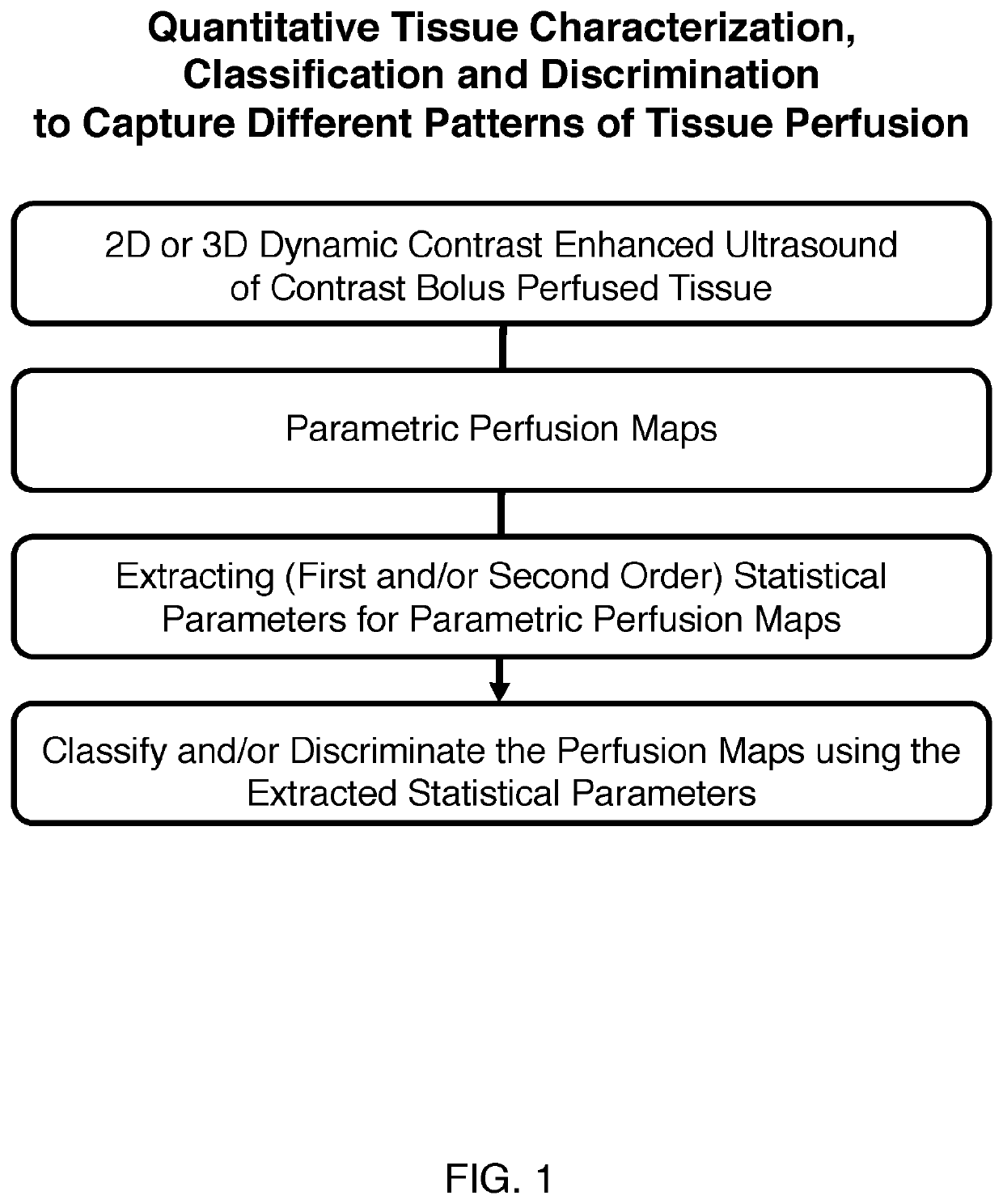Quantification of contrast-enhanced ultrasound parameteric maps with a radiomics-based analysis
a radiomics-based analysis and contrast-enhanced ultrasound technology, applied in image enhancement, instruments, recognition of medical/anatomical patterns, etc., can solve problems such as complex patient management, no rapid and efficient methods to determine which treatment regimens, and anatomical changes in lesion siz
- Summary
- Abstract
- Description
- Claims
- Application Information
AI Technical Summary
Benefits of technology
Problems solved by technology
Method used
Image
Examples
Embodiment Construction
Experimental Design
[0030]In an exemplary and illustrative embodiment, experiments were designed to extract image features from 3D-DCE US longitudinal perfusion maps from liver metastases and to combine these as multi-parametric biomarkers that can differentiate responders from non-responders. To identify reliable features from parametric maps, repeatable histogram and texture features (image features) were isolated to discriminate between responsive and non-responsive tumors treated with the anti-angiogenic agent Bevacizumab on a subject-by-subject basis.
[0031]As a proof of concept, the use of two approaches was investigated to generate multi-parametric biomarkers for treatment assessment; i) a statistical approach, and ii) a GLMNET approach, developed on pre-clinical data and tested on pre-clinical test and human test data. Pre-clinical test data included Bevacizumab-treated and control animals, as well as a cohort for feature repeatability assessment. In addition, tested in pre-cl...
PUM
 Login to View More
Login to View More Abstract
Description
Claims
Application Information
 Login to View More
Login to View More - R&D
- Intellectual Property
- Life Sciences
- Materials
- Tech Scout
- Unparalleled Data Quality
- Higher Quality Content
- 60% Fewer Hallucinations
Browse by: Latest US Patents, China's latest patents, Technical Efficacy Thesaurus, Application Domain, Technology Topic, Popular Technical Reports.
© 2025 PatSnap. All rights reserved.Legal|Privacy policy|Modern Slavery Act Transparency Statement|Sitemap|About US| Contact US: help@patsnap.com



